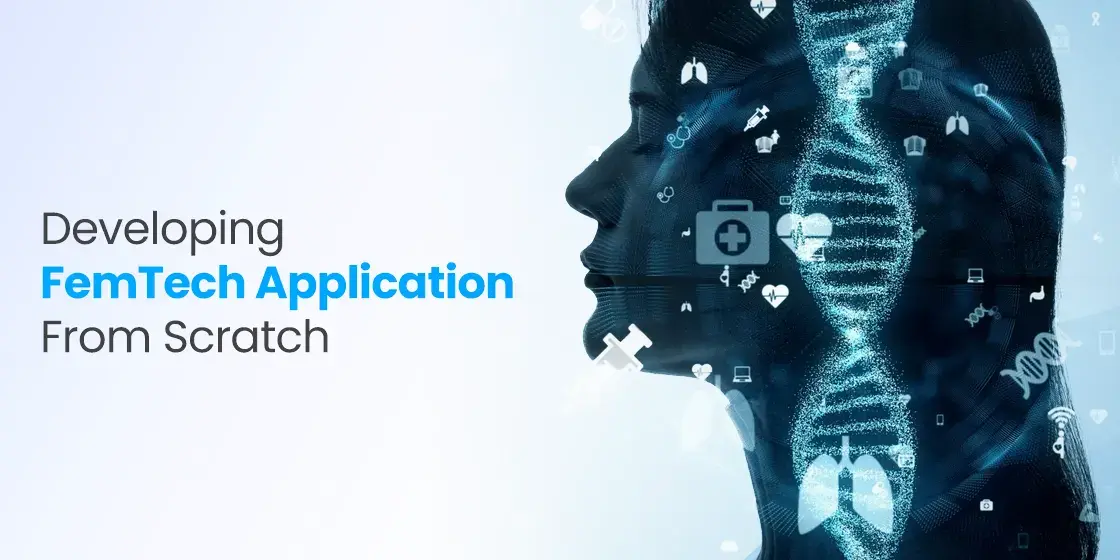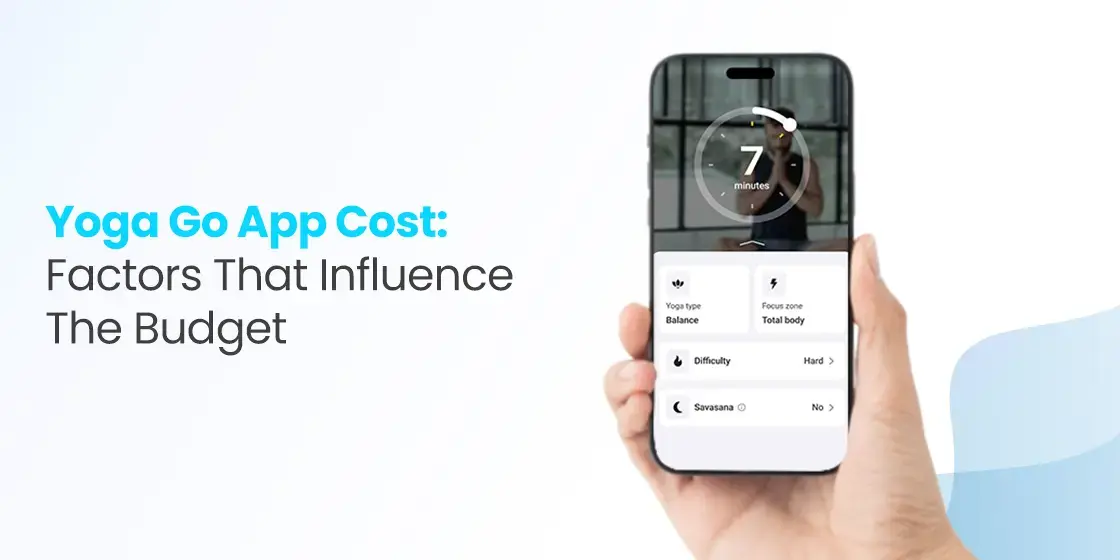Table of Content
Discover What Goes Into the Process of Grocery Delivery App Development in 2025
The grocery delivery market is experiencing explosive growth that shows no signs of slowing down. With online grocery sales in the US reaching $280.2 billion in 2024 and projected to hit $327.9 billion by 2025, there’s never been a better time to enter this lucrative space.
But here’s the thing – building a successful grocery delivery app like Instacart isn’t just about copying their features. It’s about understanding the intricate business model, sophisticated technology stack, and customer psychology that makes these platforms tick.
This comprehensive guide will walk you through everything you need to know to create an app like Instacart just like professional mobile app development services. We will explore all aspects of the topic from the foundational business strategy to the technical implementation details that most developers overlook. Let’s begin.
Understanding the Grocery Delivery Revolution
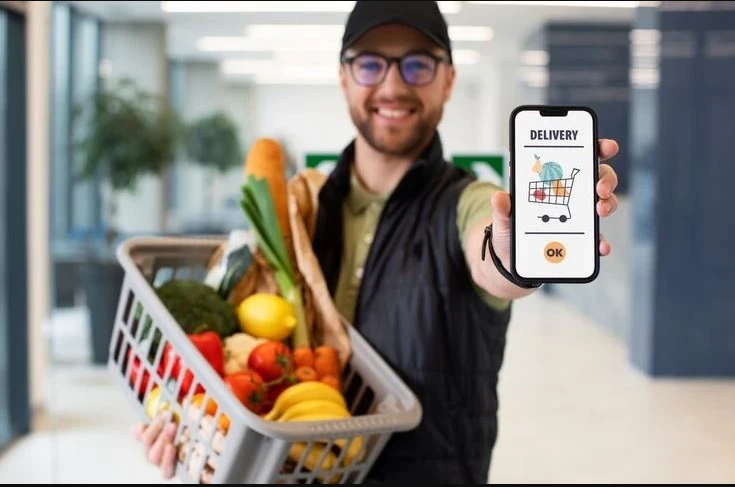
Before diving into development, it’s crucial to understand why grocery delivery apps have become such a dominant force in the retail landscape. The shift isn’t just about convenience – it’s about fundamentally changing how people think about shopping.
The Market Opportunity is Massive
The numbers tell a compelling story about grocery and food delivery apps. Instacart alone generated $3.3 billion in revenue in 2024, a 10% increase from the previous year. More importantly, they processed over 294 million orders with a network of 600,000 personal shoppers serving 80,000 stores across North America.
But Instacart isn’t the only player benefiting from this growth. The entire grocery delivery ecosystem is expanding rapidly:
- 67% of consumers now shop for groceries online regularly
- Online grocery delivery services have grown by 22% in 2025 compared to 2022
- The global grocery delivery market is projected to reach $945 billion by 2025
- U.S. online grocery sales grew 13.8% year-over-year in Q3 2024, reaching $27.4 billion
These aren’t just statistics – they represent millions of people who have permanently changed their shopping habits. The pandemic accelerated this transformation, but the convenience factor has made it permanent.
Why Traditional Grocery Shopping is Losing Ground
Understanding why people are abandoning traditional grocery shopping and going towards apps like InstaShop helps you build better solutions. The pain points are real and universal:
- Time constraints have become the primary driver. The average person spends 43 minutes per grocery trip, including travel time. For busy professionals and parents, this represents a significant burden that grocery delivery apps eliminate.
- Decision fatigue is another critical factor. Modern grocery stores stock over 40,000 SKUs, creating overwhelming choice paralysis. Successful apps like Instacart solve this by offering personalized recommendations and smart shopping lists based on purchase history.
- Inconsistent availability of products forces multiple store visits. Grocery delivery apps solve this by providing real-time inventory updates and offering substitutions when items aren’t available.
- Physical limitations affect millions of consumers. Elderly shoppers, people with disabilities, and those without reliable transportation find grocery delivery apps to be lifesavers rather than conveniences.
Deconstructing the Instacart Business Model
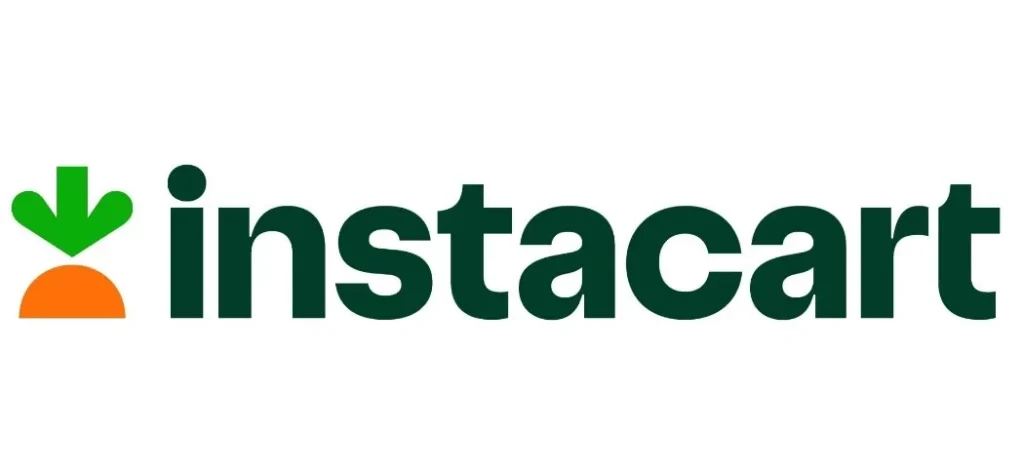
To build an app like Instacart, you need to understand exactly how they make money and create value for all stakeholders in their ecosystem.
The Three-Sided Marketplace Strategy
Instacart operates what’s known as a three-sided marketplace, connecting customers, retail partners, and personal shoppers. This model creates network effects where each additional participant makes the platform more valuable for everyone else.
Customer Value Proposition:
- Access to multiple grocery stores through a single app
- Professional shoppers who handle product selection and quality checking
- Flexible delivery windows from 1-hour to scheduled weekly deliveries
- Real-time communication with shoppers for substitutions and special requests
Retail Partner Value Proposition:
- Expanded customer reach without additional physical infrastructure
- Increased sales volume through digital channels
- Customer data insights for inventory and marketing optimization
- Reduced operational costs for order fulfillment
Personal Shopper Value Proposition:
- Flexible work schedules with the ability to work whenever they want
- Competitive earnings with tips and bonuses
- Simple onboarding process without complex requirements
- Performance-based opportunities for increased compensation
Grocery Delivery Revenue Streams: How Instacart Makes Money
Instacart’s revenue model is sophisticated and multi-layered, generating income from multiple sources:
1. Delivery and Service Fees (Primary Revenue)
- Standard delivery fees range from $3.99 to $7.99 per order
- Service fees typically represent 5-10% of the order total
- Heavy order fees for items over certain weight thresholds
- Surge pricing during high-demand periods
2. Subscription Revenue (Instacart+)
- Monthly subscription: $9.99/month
- Annual subscription: $99/year
- Benefits include free delivery on orders over $35 and reduced service fees
- This creates recurring revenue and increases customer lifetime value
3. Retail Partner Commissions
- Commission fees of 3-15% on every order from partner stores
- Premium placement fees for stores wanting priority positioning
- Promotional placement fees for featuring specific products
- Data and analytics services sold to retail partners
4. Advertising Revenue
- Sponsored product listings within the app
- Brand advertising from consumer goods companies
- Promotional campaign management services
- Targeted advertising based on shopping behavior data
5. Markup on Products
- Some retailers allow Instacart to mark up products by 10-15%
- This markup is transparent to customers and varies by retailer
- Helps offset operational costs and shopper payments
This diversified revenue model ensures Instacart isn’t dependent on any single income source, making the business more resilient and profitable.
Essential Features for Your Grocery Delivery App
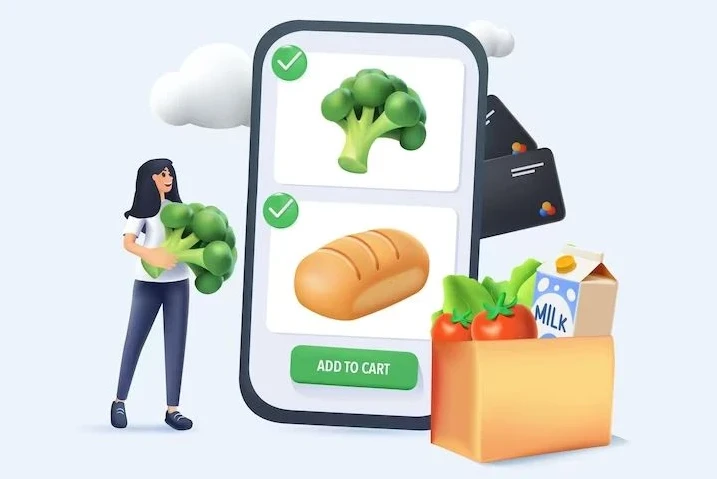
Building a successful grocery delivery app requires implementing features across multiple user interfaces. And just like with the likes of restaurant app development, there are a lot of different sides that need to be catered to, from the front of the house to the supply line, and more. Here’s a comprehensive breakdown of what you need.
Customer-Facing App Features
Core Shopping Experience:
- Advanced Search and Discovery: Smart search with autocomplete, voice search, and barcode scanning
- Personalized Recommendations: AI-powered suggestions based on purchase history and preferences
- Smart Shopping Lists: Automated list generation based on previous orders and dietary preferences
- Real-time Inventory: Live stock updates to prevent disappointment and enable immediate substitutions
- Product Information: Detailed descriptions, nutritional information, and customer reviews
Ordering and Checkout:
- One-Click Reordering: Instantly reorder previous purchases or favorite items
- Flexible Scheduling: Same-day, next-day, or scheduled delivery options
- Multiple Payment Options: Credit/debit cards, digital wallets, SNAP/EBT integration
- Subscription Management: Easy signup and management of premium memberships
- Promo Code Integration: Seamless application of discounts and promotional offers
Delivery and Communication:
- Live Order Tracking: Real-time GPS tracking of shoppers and delivery progress
- Shopper Communication: In-app messaging for substitutions and special instructions
- Delivery Notifications: Push notifications for order updates and delivery confirmations
- Photo Confirmations: Images of delivered orders for added security and verification
Account Management:
- Order History: Complete purchase history with reorder capabilities
- Dietary Preferences: Filters for organic, gluten-free, kosher, and other dietary needs
- Address Management: Multiple delivery addresses for home, work, and family
- Feedback System: Rating and review system for shoppers and overall service
Personal Shopper App Features
Order Management:
- Batch Selection: Accept multiple orders for efficient shopping trips
- Store Navigation: Optimized shopping routes and aisle-by-aisle organization
- Item Scanning: Barcode scanning for accurate product selection
- Substitution Workflow: Easy communication with customers about unavailable items
- Weight and Quantity Verification: Tools for accurate measurement of produce and deli items
Earnings and Performance:
- Real-time Earnings: Live tracking of tips, bonuses, and total earnings
- Performance Metrics: Ratings, on-time delivery rates, and customer feedback
- Incentive Programs: Bonuses for peak hours, high-volume periods, and excellent performance
- Schedule Management: Flexible scheduling tools and availability settings
Navigation and Delivery:
- GPS Integration: Turn-by-turn navigation optimized for delivery routes
- Delivery Confirmation: Photo capture and customer signature collection
- Customer Communication: Easy messaging and calling capabilities
- Safety Features: Emergency contacts and safety protocols
Admin Dashboard Features
Operations Management:
- Order Monitoring: Real-time oversight of all active orders and potential issues
- Shopper Management: Onboarding, performance tracking, and support tools
- Inventory Synchronization: Tools for managing real-time stock updates from partners
- Dispute Resolution: Streamlined processes for handling customer complaints and refunds
Analytics and Reporting:
- Financial Dashboard: Revenue tracking, commission management, and profit analysis
- Performance Metrics: Delivery times, customer satisfaction scores, and operational efficiency
- Market Intelligence: Demand forecasting, seasonal trends, and growth opportunities
- Partner Analytics: Store performance, inventory insights, and partnership optimization
Marketing and Growth:
- Promotional Campaign Management: Tools for creating and managing discounts and offers
- Customer Segmentation: Advanced targeting for marketing campaigns and personalization
- Referral Program Management: Tracking and optimization of customer acquisition programs
- A/B Testing Platform: Tools for testing new features and optimizing user experience
Store Partner Portal Features
Inventory Management:
- Real-time Stock Updates: Easy tools for updating product availability
- Bulk Import/Export: Efficient management of large product catalogs
- Pricing Management: Dynamic pricing tools and promotional pricing options
- Product Information: Rich product descriptions, images, and specifications
Order Processing:
- Order Queue Management: Prioritization and processing of incoming orders
- Inventory Alerts: Notifications for low stock and out-of-stock items
- Performance Analytics: Sales data, popular products, and customer insights
- Commission Tracking: Transparent reporting of fees and earnings
Development Process: From Concept to Launch
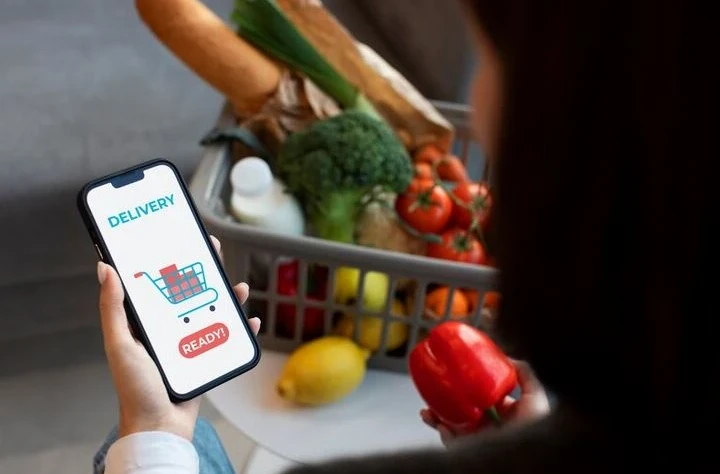
Building a grocery delivery app like Instacart requires a systematic approach to mobile app development that balances speed to market with quality and scalability.
Phase 1: Market Research and Planning (4-6 weeks)
Market Analysis: Start by conducting thorough market research to understand your local competitive landscape. While Instacart dominates in North America, there are opportunities in underserved markets or niche segments. Research your target demographics, their shopping behaviors, and pain points with existing solutions. Surveys, focus groups, and competitor analysis will provide valuable insights for feature prioritization.
Business Model Validation: Validate your business model assumptions through customer interviews and market testing. Understand what customers are willing to pay for delivery services and what features they value most. Determine your ideal customer acquisition cost and lifetime value to ensure sustainable unit economics. Many grocery delivery startups fail because they underestimate the true cost of customer acquisition.
Technical Planning: Define your technical requirements based on expected user volume, geographic coverage, and feature complexity. Choose your technology stack based on your team’s expertise and long-term scalability needs. Create detailed technical specifications and architecture diagrams. This upfront planning will save significant time and money during the development phase.
Phase 2: MVP Development (12-16 weeks)
Core Feature Development: Focus on building the essential features that enable the basic grocery delivery experience. This includes user registration, product browsing, ordering, payment processing, and basic order tracking. Don’t try to build everything at once. The goal of an MVP is to validate your core assumptions with real users as quickly as possible.
Essential Integrations: Implement critical third-party integrations for payments, maps, and communications. These integrations often take longer than expected, so plan accordingly. Start with a limited number of retail partners to simplify initial operations. It’s better to provide excellent service with few partners than mediocre service with many.
Quality Assurance: Implement comprehensive testing procedures from the beginning. Grocery delivery apps have low tolerance for errors, as mistakes directly impact customer satisfaction and business reputation. Test across multiple devices, operating systems, and network conditions. Real-world testing is crucial for identifying issues that won’t appear in controlled environments.
Phase 3: Beta Testing and Iteration (6-8 weeks)
Limited Market Launch: Launch your MVP in a limited geographic area with a small group of beta users. This allows you to identify and fix issues before a wider rollout. Monitor key metrics like order completion rates, customer satisfaction, and operational efficiency. Use this data to prioritize improvements and feature additions.
Stakeholder Feedback: Gather feedback from all stakeholders – customers, shoppers, and retail partners. Each group will have different perspectives on what works and what needs improvement. Pay special attention to operational feedback from shoppers, as they’re the ones actually fulfilling orders. Their insights are crucial for improving the user experience.
Performance Optimization: Optimize app performance based on real-world usage data, as well as the latest in top coding languages for app development. Focus on loading times, crash rates, and user engagement metrics. Implement analytics tracking to understand user behavior and identify areas for improvement. This data will guide your feature development roadmap.
Phase 4: Full Launch and Scaling (Ongoing)
Market Expansion: Gradually expand to new geographic markets, incorporating lessons learned from your beta launch. Each new market may require adjustments to your business model or operational processes. Scale your operations team and customer service capabilities to handle increased order volume. Operational excellence becomes even more critical as you grow.
Advanced Feature Development: Add sophisticated features like AI-powered recommendations, advanced analytics, and automation tools. These features differentiate your platform and improve unit economics. Continuously monitor competitor activities and market trends to stay ahead of the curve. The grocery delivery space is highly competitive and rapidly evolving.
Monetization Strategies: Building a Profitable Business
Creating a successful grocery delivery app requires multiple revenue streams and careful attention to unit economics. Here’s how to build a profitable business:
- Delivery and Service Fees: Structure your fees to cover operational costs while remaining competitive. Consider dynamic pricing based on demand, distance, and order size. Test different fee structures to find the optimal balance between customer acquisition and profitability.
- Subscription Models: Implement a premium subscription offering that provides value to frequent users while generating recurring revenue. Monitor metrics like churn rate, average order frequency, and customer lifetime value. Adjust pricing based on these metrics.
- Commission Structures: Negotiate commission rates with retail partners based on order volume, exclusivity, and promotional support. Consider tiered commission structures that incentivize partners to drive more orders through promotional activities and exclusive offerings.
- Advertising Revenue: Develop advertising products that provide value to brands and retailers without compromising user experience. Implement sophisticated targeting capabilities based on shopping behavior, demographics, and preferences.
- Customer Acquisition Cost (CAC): Track your customer acquisition costs across different channels. Focus on channels that deliver customers with the highest lifetime value. Implement referral programs and organic growth strategies. Word-of-mouth marketing is powerful for grocery delivery apps.
- Operational Efficiency: Optimize your operations to reduce costs while maintaining service quality. Invest in automation tools that reduce manual work and improve accuracy. Small improvements in operational efficiency can have significant impacts on profitability at scale.
- Technology Infrastructure: Choose scalable technology solutions that grow with your business. Cloud-based infrastructure can help manage costs while providing the flexibility to scale rapidly. Monitor your technology costs and optimize based on usage patterns.
Overcoming Common Challenges
Building a grocery delivery app comes with unique challenges that require specific solutions.
Inventory Management
Real-time Synchronization: Implement robust API integrations and fallback systems to handle data inconsistencies. Develop algorithms that predict inventory availability based on historical data and current trends. This helps prevent out-of-stock situations and improves customer satisfaction.
Substitution Management: Create intelligent substitution algorithms that suggest appropriate alternatives when items are unavailable. Train personal shoppers to make good substitutions based on customer preferences, reducing the need for customer communication and speeds up shopping.
Quality Control
Shopper Training: Develop comprehensive training programs for personal shoppers that cover product selection, customer communication, and delivery procedures. Implement quality control systems that monitor shopper performance and provide feedback for improvement. Regular training updates keep shoppers informed about new products and procedures.
Customer Feedback Integration: Create systems that capture and analyze customer feedback about product quality, shopper performance, and overall service. Implement quick response systems for addressing quality issues, as well as User Acceptance Testing modules in the early stages. Fast resolution of problems can turn negative experiences into positive ones.
Scalability Challenges
Technology Scaling: Design your technology infrastructure to handle rapid growth in users and order volume. Implement monitoring systems that identify performance issues before they impact customers. Proactive scaling is much more effective than reactive scaling.
Operational Scaling: Develop operational processes that can scale with your business growth. This includes shopper onboarding, customer service, and partner management. Create standardized procedures and training materials that ensure consistent service quality as you expand to new markets.
Regulatory Compliance
Food Safety Regulations: Understand and comply with local food safety regulations, including proper handling of perishable items and temperature control during delivery. Implement systems that track food safety compliance for regulatory audits. This is crucial for maintaining operating licenses.
Labor Law Compliance: Ensure compliance with labor laws regarding independent contractor classification and worker rights. This is particularly important for personal shopper management. Stay informed about regulatory changes. Proactive compliance is less expensive than reactive compliance.
StruqtIO: Build New-Age Grocery Apps Integrated with Creative Features
StruqtIO holds immense experience in developing all types of custom mobile applications. Working with us, you can get cutting-edge grocery delivery apps integrated with unique features. We understand the requirements of every customer market, hence we tailor our solutions as per the needed demands.
Besides grocery and virtual try-on app development, we can also help you to develop other custom software solutions as well. From .NET development to cloud integration and database development to software outsourcing, we can help you to build a variety of business apps leveraging our advanced tech services.
Frequently Asked Questions
| What is a grocery delivery application? Grocery delivery apps typically connect customers with local grocery stores or supermarkets, allowing them to choose from a wide range of products, including fresh produce, pantry staples, household items, and more. |
| Why grocery delivery apps are popular in the UAE? The popularity of grocery delivery apps in the UAE can be attributed to a combination of factors. It includes easy products ordering, hassle-free online shopping, affordable prices and more others. |
| Which grocery delivery apps are more popular in the UAE? There are different types of grocery delivery apps currently popular in the UAE. It includes notable names like Instashop, Talabat, elGrocer, Carrefour Now, Lulu Hypermarket and more others. |
Conclusion
Knowing how to build an app like Instacart successfully for the grocery delivery business requires combining business acumen, technical expertise, and operational excellence. The market opportunity is substantial, but success depends on understanding and executing across multiple dimensions.
Remember that building a grocery delivery app is a marathon, not a sprint. Success requires patience, persistence, and continuous improvement. The companies that succeed in this space are those that consistently deliver value to customers while building sustainable business models.
Whether you’re an entrepreneur looking to enter the grocery delivery space or an established business wanting to expand into delivery services, the opportunity is real and substantial. The key is approaching it with the right strategy, sufficient resources, and commitment to long-term success.

Empower your digital journey with StruqtIO - Your dedicated partner for cutting-edge custom software development, innovation, and digital transformative solutions. Harness the power of technology to elevate your business and redefine your digital landscape today.

